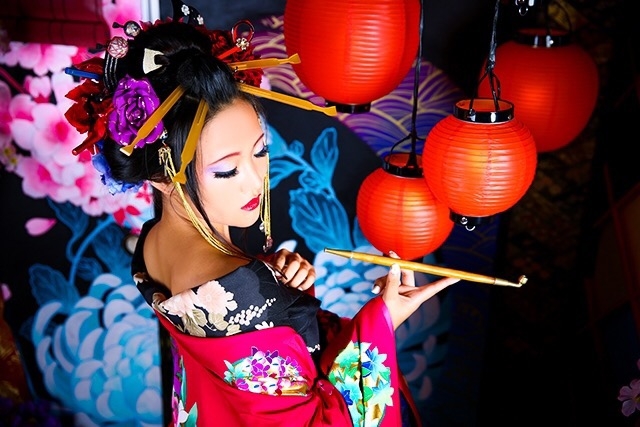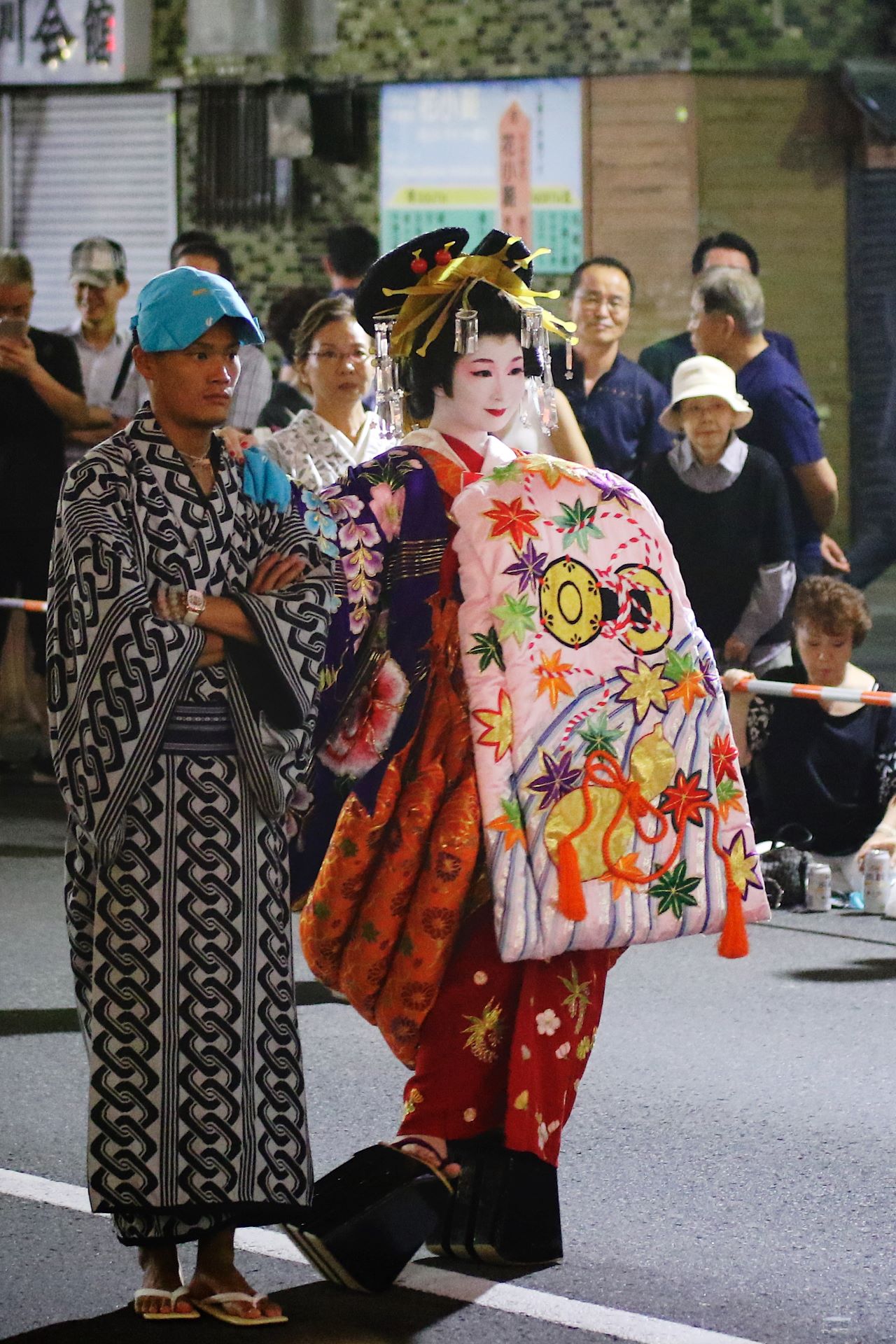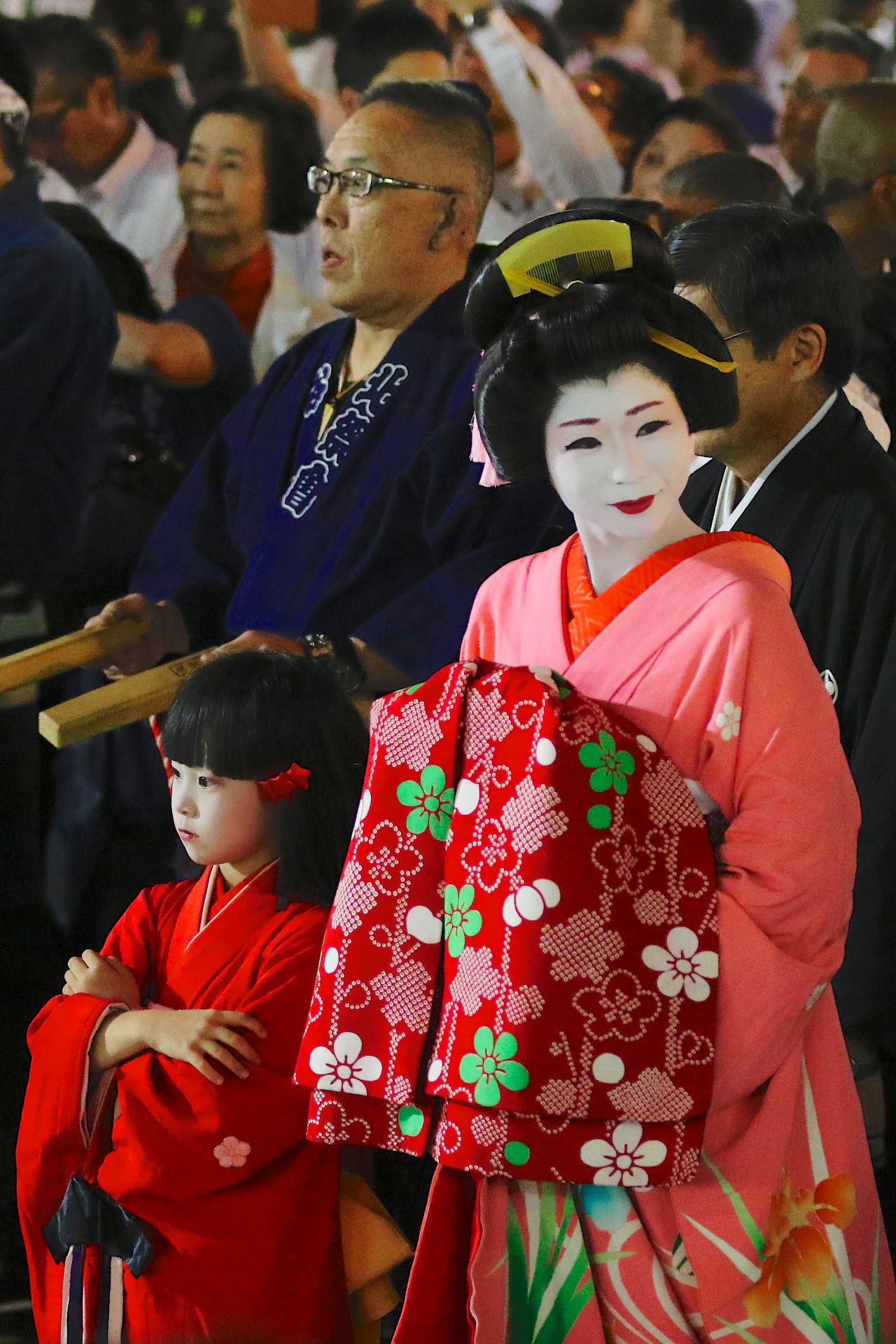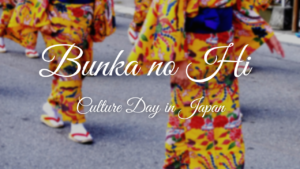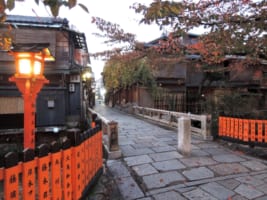What are the Differences between Geisha, Maiko and Oiran?
The most famous representatives of Japanese high culture
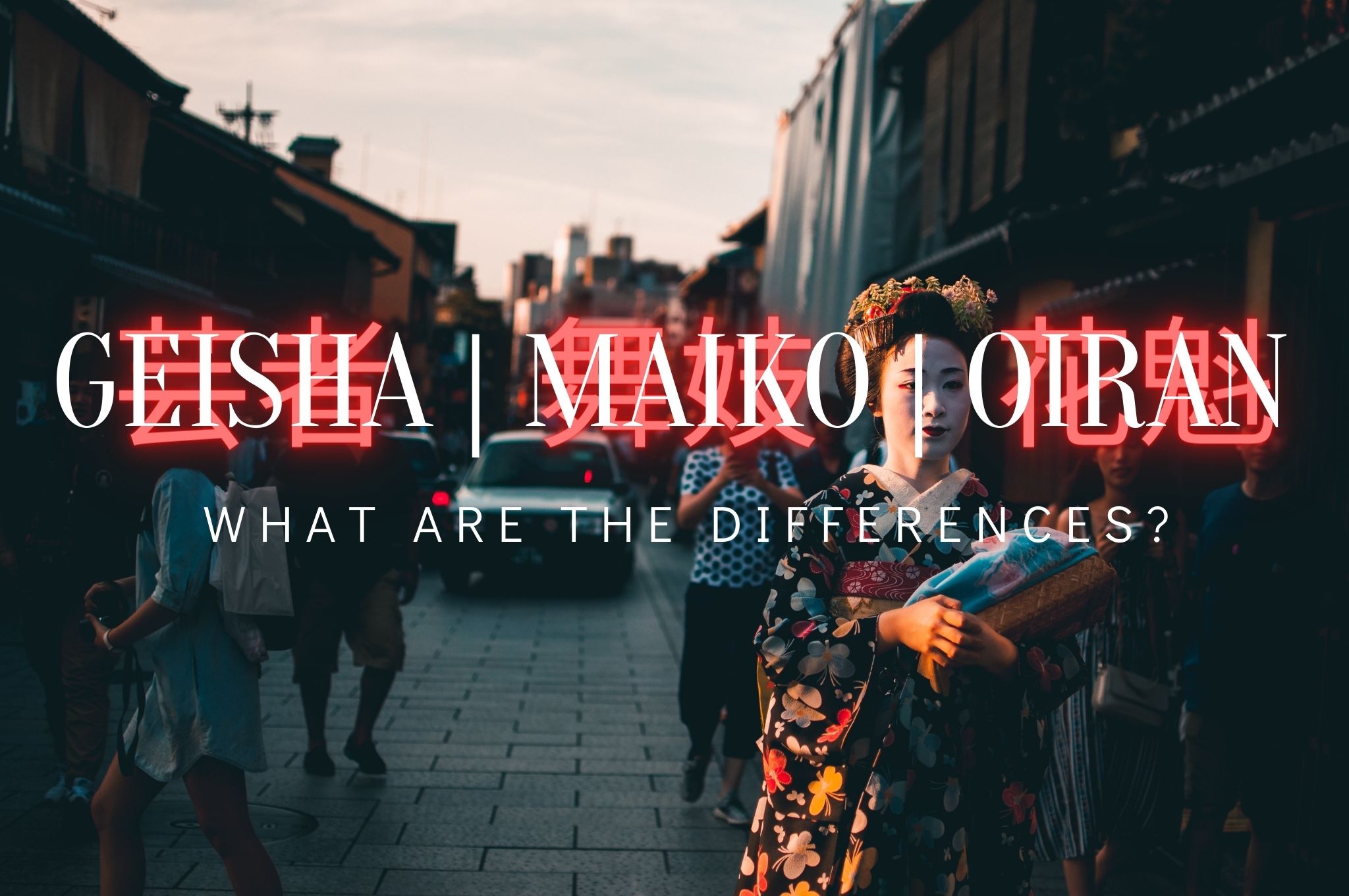
So, you’ve probably heard of geisha, maiko, and oiran, but do you really know what sets them apart from one another? Well, in a nutshell:
A geisha is a woman who has trained in traditional Japanese arts like music, dance, games, and conversation. They’re often hired to entertain guests at parties and other events. A maiko is like a trainee geisha, usually in her teens or early twenties, who is learning the ropes to become a full-fledged geisha. They’re mostly identifiable for their elaborate and colorful attire and hairstyles. And lastly, the oiran were entertainers from the Edo period, known for their beauty, culture, and artistic talents. Wealthy patrons would seek their companionship and entertainment.
That’s basically the gist of it, but keep reading for the specifics:
Geisha, the Epitome of Cultural Refinement
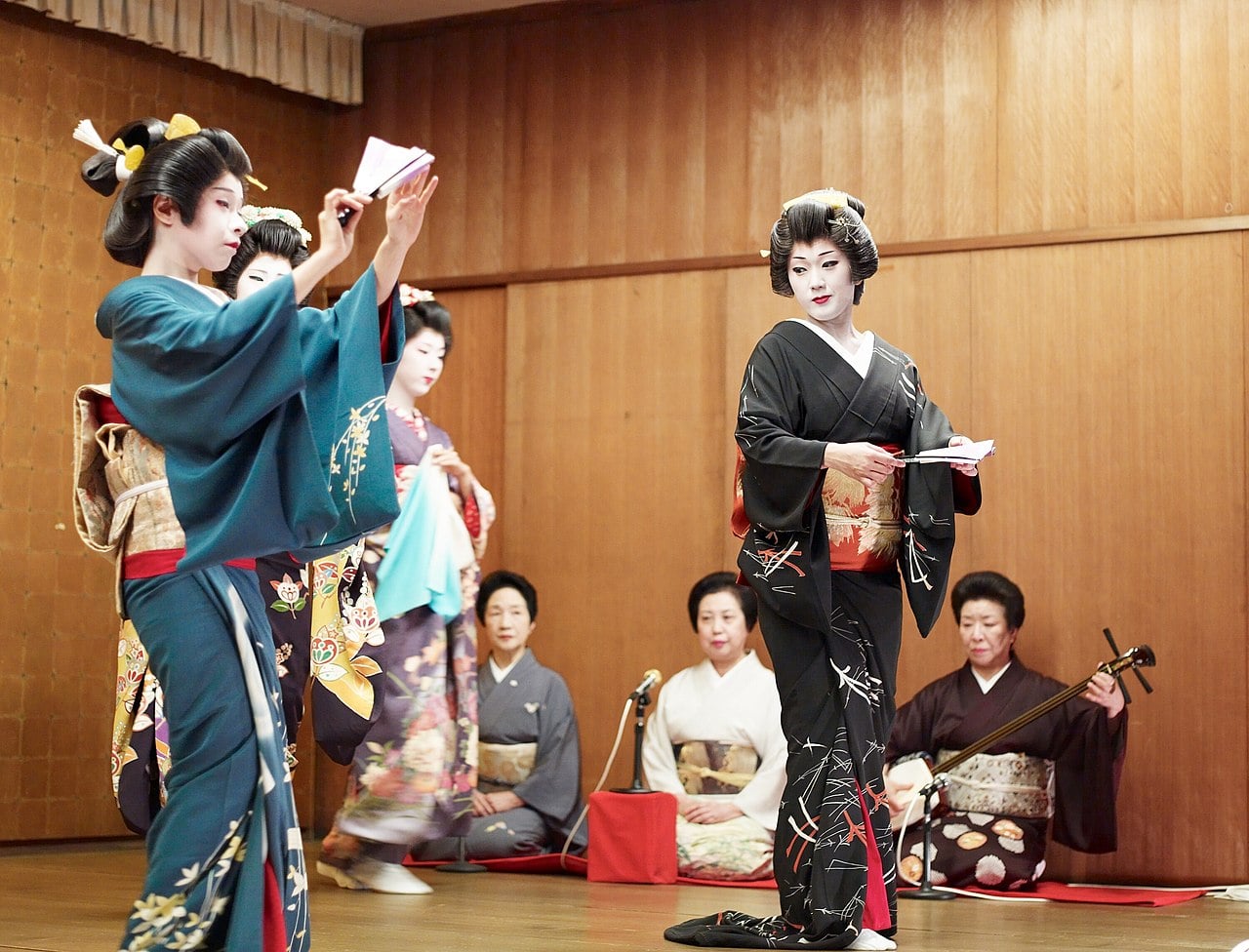
Alright, let’s talk about Geisha (芸妓, performing girl) or Geiko (芸子) according to Kyoto and Kanazawa dialects. These women are highly skilled entertainers who have undergone years of arduous training in traditional Japanese arts, sometimes for the purpose of entertaining important guests at teahouses, but also on high-profile events or cultural occasions, often for a very expensive price.
As expected, they’re known for their grace, elegance, and charm. Their training allows them to be very well-versed in music, dance, games, and a wide variety of topics to keep a conversation about anything, and thus, able to hold their own in any social situation.
The process of becoming a geisha is quite rigorous. First, a young girl is taken on as an apprentice, or maiko, and begins her training. This can include learning traditional arts such as music, dance, games, and conversation, as well as the etiquette and customs of the geisha world. This training can take several years, during which the maiko will live and work in a geisha house. Once she has completed her training, she will make her debut as a full-fledged geisha.
The Traits of a Geisha

When it comes to their appearance, geisha are typically associated with their traditional white makeup, brightly colored kimonos, and a very distinctive hairstyle often adorned with hair ornaments.
However, we must be careful not to confuse them with maiko. The latter tend to have more striking looks while the former tend to dress in simpler, more subdued, and mature colors and patterns, with more minimalistic decorations. Their value as experienced performers is supposed to rely on their refined skills rather than looks.
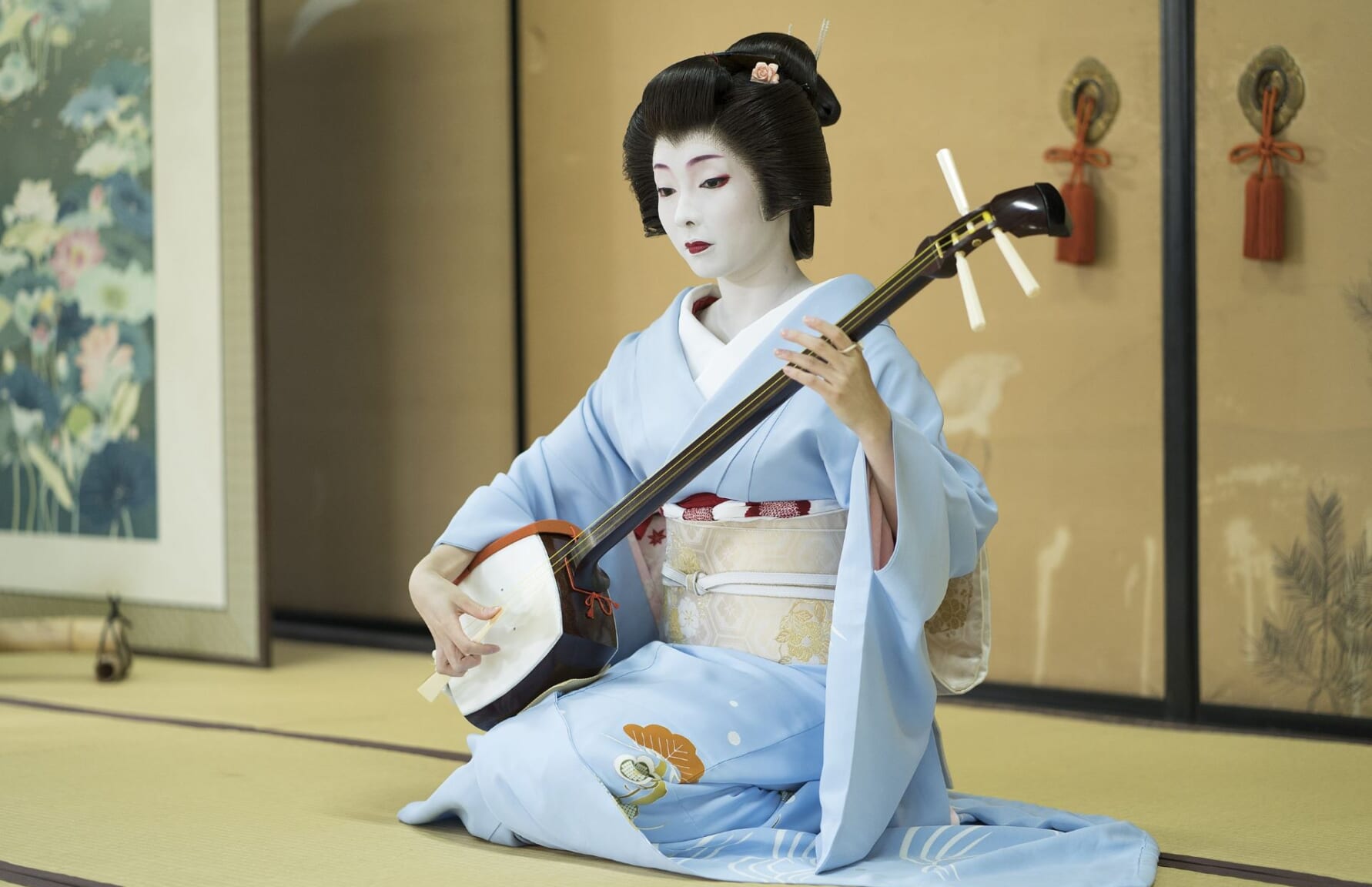
They’re highly sought after by wealthy and influential people for their exclusive company and entertainment. This high exclusivity comes with a price though; geisha today are an increasingly rare sight as their numbers continue to dwindle, because very few can afford their services.
At the same time, fewer and fewer girls are willing to undergo such tough training. For the time being, the tradition is still kept alive by a few dedicated geisha houses and apprentices. Still, they’re undoubtedly considered cultural ambassadors and a widely beloved part of the cultural landscape of the most traditional Japanese districts.
Maiko, a professional entertainer in the making
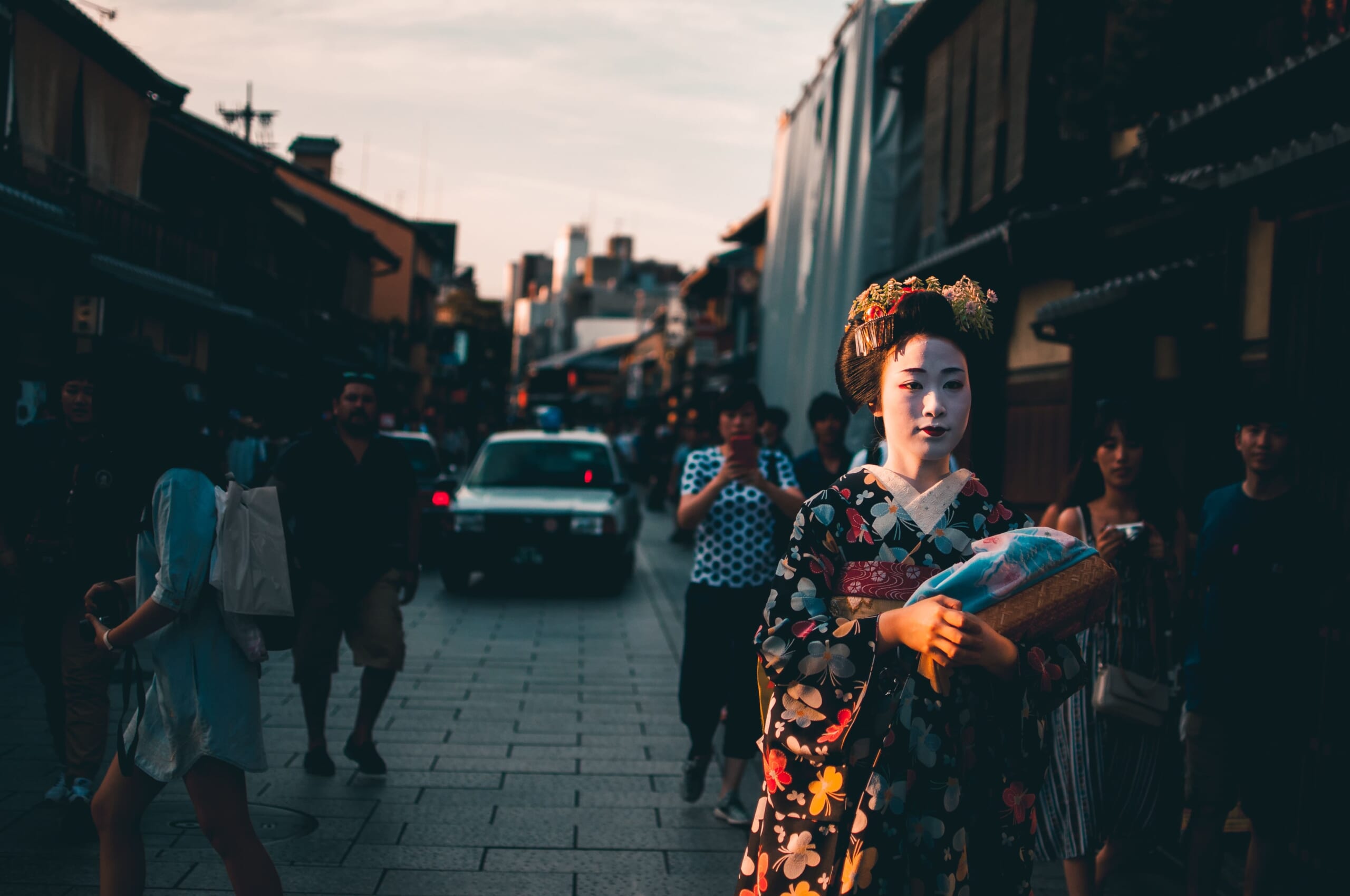
As such, they’re typically more playful and lighthearted compared to geishas, and their performances are more lively and energetic. They’re also more approachable and are more commonly seen walking around the teahouse districts.
How to Distinguish a Maiko
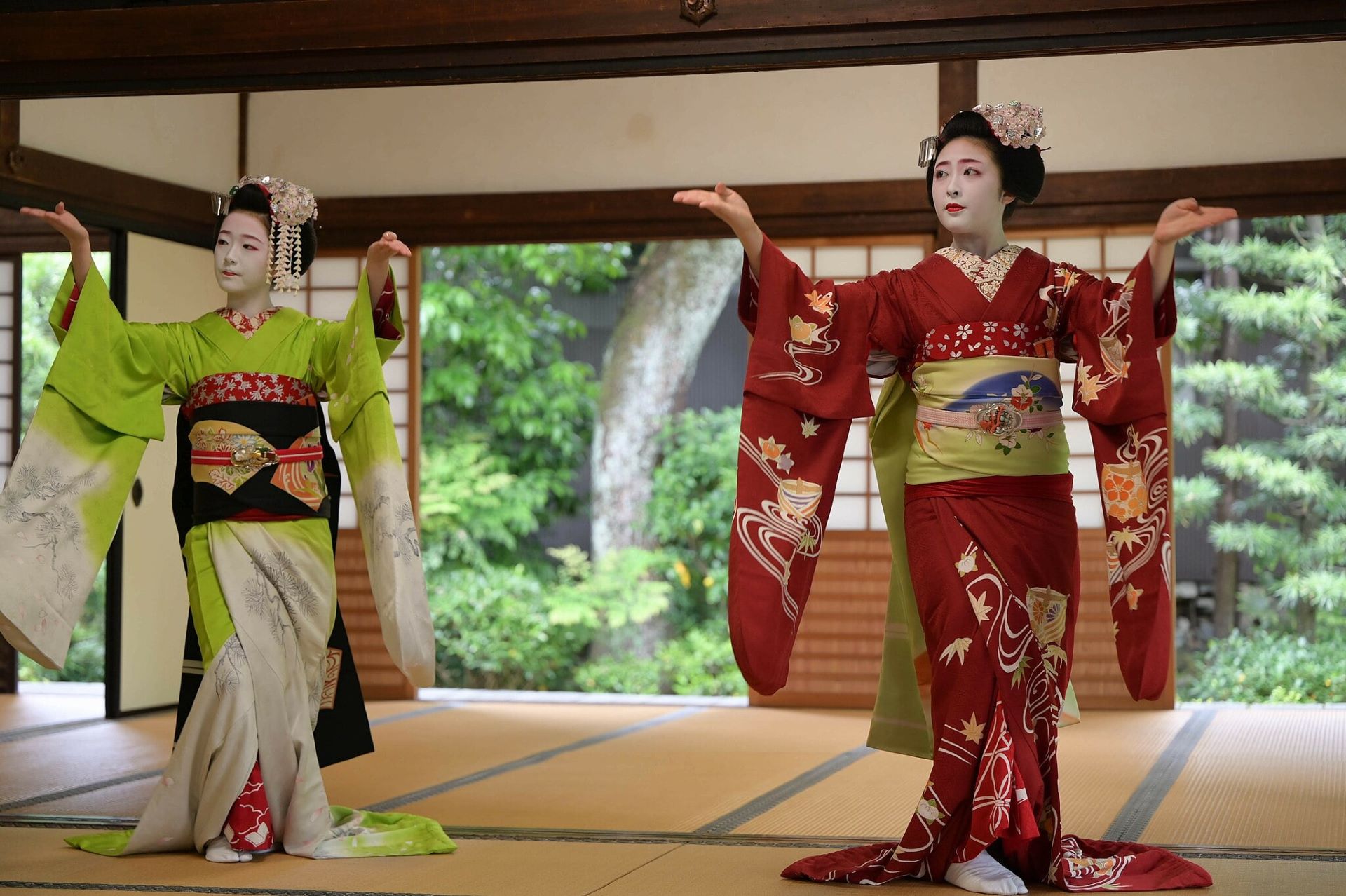
Some of the quick giveaways that identify a maiko: their very long kimono sleeves, known as furisode, their hairstyles that are much more elaborate with more ornaments and their attire, more colorful with striking and vivid patterns compared to geisha robes.
The reason why, is that while they’re still in their formative period, they must compensate for their lack of mastery with natural charm as well as brightly colored and more elaborate kimono patterns, hairstyles, and hair ornaments. If we go further into detail, you will notice things like their obi (sash) which is tied differently, or their much thicker sandal soles, like if they’re wearing platform shoes.
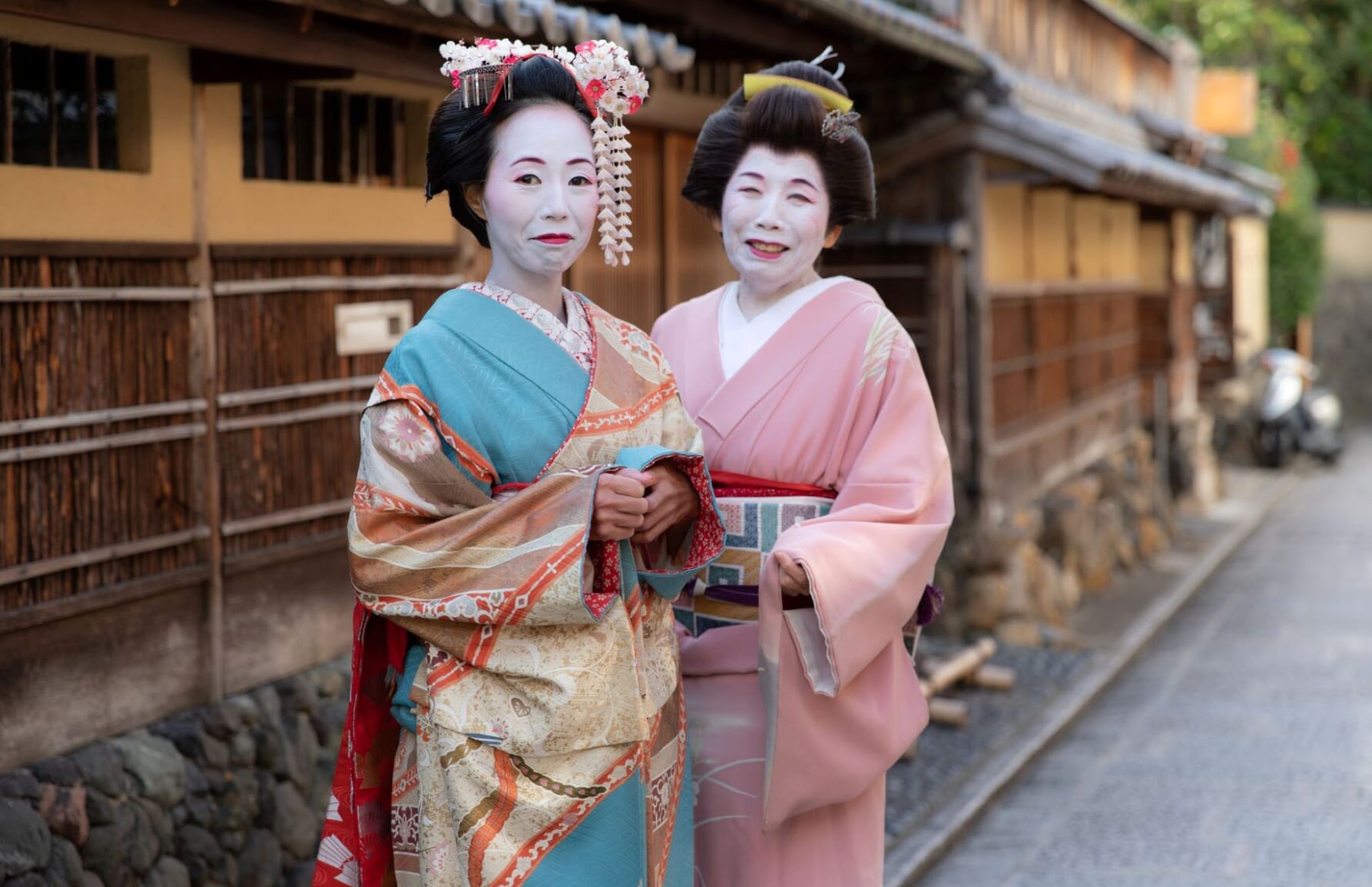
In terms of their duties, maikos typically work with a geisha mentor, who will guide them through their training and help them to develop their skills. They also attend parties and other events, where they entertain guests alongside their mentor.
If you wish to experience authentic Maiko and Geisha performances in the heart of Gion, we recommend joining the following tour: Maiko & Geisha performance and Cultural Walking Tour in Gion
Oiran, Masters of the Floating World
Oiran (花魁, the kanji could be translated as “the flower ahead of others” but it’s said that the name actually originates in a shortened version of oira no tokoro no neesan, or “our place’s older sister”) is a historical figure from Japan’s Edo period, known as the the crème de la crème of the courtesan world.
They were impossibly sophisticated courtesans from the designated red-light districts, who had developed their skills in traditional arts such as music, dance, games, poetry, and conversation. Their beauty and fashion sense was the stuff of legend, akin to our contemporary influencers or top models. For this reason, they were frequently depicted in ukiyo-e illustrations (ukiyo means “floating world”, a euphemism for pleasure districts).
Only top-ranking nobles or samurai could have access to them, but not before investing a sizable amount of money and time in their respective tea houses, and even after such investment, oiran still held the prerogative to accept them or not.
The Main Features of Oiran
As for their attire, oirans wore a very elaborate and colorful kimono, which was made of expensive silk and adorned with intricate designs. They also had a very distinctive hairstyle, which was often adorned with hair ornaments and wigs. They also wore high platform sandals called “geta” and carried a folding fan, a sign of their profession. The way they walked, the way they carried themselves, and the way they talked were all part of a carefully designed performance.
Because of their high consideration as cultured and educated women, expected to be well-versed in literature, poetry, and arts, they were valuable companions who often had the capacity to exercise soft political power by influencing some of their most esteemed clients (to the point they were sometimes nicknamed as castle-toppers), so their role in society was quite complex.

However, as glamorous as it could seem, the road to becoming an oiran was plagued with tragic stories of debt, slavery, disease, and early death. Only the most beautiful and successful girls could aspire to receive the required training, as it was a very expensive investment.
The oiran started to decline with the rise of the merchant class, as their social status of merchants didn’t allow them to access oirans despite being able to afford them, sparking the rise of geisha as we know them nowadays. The cultural changes in Japanese society during the Meiji period regarding legal prostitution and the eventual abolishment of designated pleasure districts effectively made oirans disappear as their profession was illegalized. Nowadays, we can only see performers dressed as oiran on reenactment parades or kabuki plays.
Geisha, maiko, and oiran could be seen as the most representative form of traditional Japanese entertainment. Geisha are the ultimate hostess, gracious, knowledgeable, and charming, while maiko are like the up-and-comers in the scene; with the historical background of the oiran, the high-ranking courtesans who were like the superstars of their time with a lasting impact on Japanese pop culture that’s still celebrated today.
To learn more about Japanese traditional culture, check the following links
Written by
Photographer, journalist, and avid urban cyclist, making sense of Japan since 2017. I was born in Caracas and lived for 14 years in Barcelona before moving to Tokyo. Currently working towards my goal of visiting every prefecture in Japan, I hope to share with readers the everlasting joy of discovery and the neverending urge to keep exploring.





